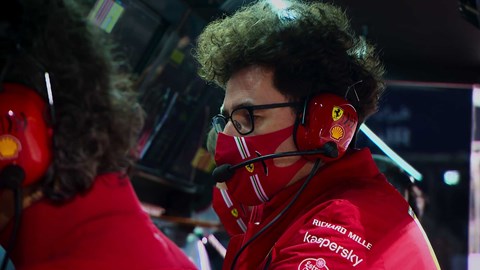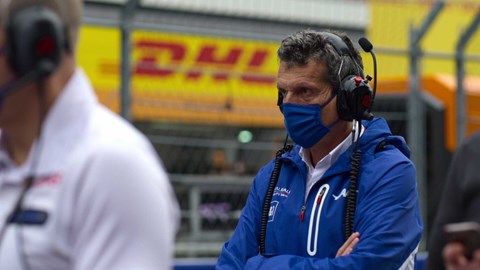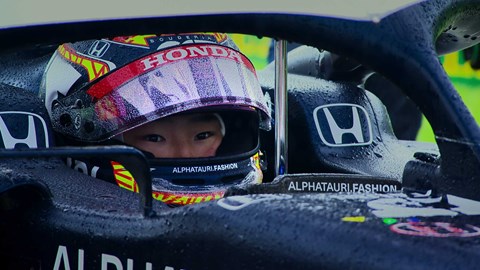► Season 4 of Netflix’s F1 doc
► Charts the controversial 2021 season
► Streaming now
Netflix’s Formula 1 docusoap juggernaut is back, and with the most dramatic Grand Prix season of the 21stcentury to work with for raw material. Must-watch material for card-carrying F1 anorak and casual viewer/long-suffering partner alike, surely?
After all, that’s the dual audience Formula 1: Drive to Survive has so far managed to woo, to great effect. Particularly in the USA, where its third series in 2020 alone is reported to have driven an extra 2.7m 16-35-year-olds to become interested in F1 since the previous year.
Can Series Four please both just as well? To find out, this motorsport fan and his not-a-motorsport-fan girlfriend binge-watched the series in short order to write this review.
The series sets out its stall with its now familiar format: informative soundbites from drivers, team principals and journalists, interspersed with commentary excerpts to explain what’s going on. It feels perhaps a little more patronising than previous series. There are plenty of hackneyed quotes: ‘We have togive it everything;’ ‘This sport is cut-throat;’ ‘We’re here to win.’ And some overly simplistic Janet-and-John explanations: ‘Newer tyres will give you more speed but obviously it costs you time to stop and change them;’ ‘The aim is for us to have both drivers as high up the grid as possible.’ Thanks for that.

A decent chunk of each episode is taken up by self-consciously dramatic slow-motion footage of the start of races. A red light winks into action; cut to on-edge expressions of faces in the pit garages; cut to another red light; cut to different, similarly stressed faces in a rival pit garage; light goes out; drumbeat ‘drops;’ cut to a wheel spinning in slow motion; then full-speed footage of cars racing to the first corner with commentary. My girlfriend wonders out loud if they’re using the same stock light shots for the same montage in each episode. I’m not sure that she’s wrong.
The most interesting insights Drive to Survive provides are the fly-on-the-wall recorded reactions when F1’s personalities are not speaking directly to the cameras. The sweary messages that can’t broadcast on TV are, as always, part of the series’ appeal. You hear driver’s get emotional, whether after a bungled pit strategy or after being outqualified by a team-mate, and there are microphones on the pit crews watching from the garages too. ‘Come on Max, get the job done,’ frets a bundle-of-adrenaline Red Bull mechanic while Verstappen tries to line up a move on track, for example.
The series’ other strength is to give an insight into the personalities at the teams further down the grid, who don’t get as much regular airtime on TV. For example, we get to know newly appointed team principal Jost Capito at Williams and Alpha Tauri rookie driver Yuki Tsunoda (who comes across incredibly well until he starts talking about his toilet habits and calling other drivers unprintable words over the radio).
Backmarker team Haas, in DTS tradition, reliably provides one of the most enthralling episodes. Team principal Gunther ‘Swears-a-lot-doesn’t-he?’ Steiner features prominently, and you’re left with a more rounded picture of the controversial Nikita Mazepin, for good and for bad.

And the lurking Netflix lenses and long-reaching boom microphones capture some special moments: the disappointment etched in George Russell’s face when realises he’ll have to wait a little longer to know if he’ll be a Mercedes driver; and the moment he is told by Toto Wolff he’s a Mercedes driver for 2022 is captured on camera.
All of the above is very much in line with what we’ve come to expect from Drive To Survive’s first three seasons, and perhaps through familiarity, this season’s somehow less enthralling and less addictive.
We end up back at the Monaco Grand Prix in repeated episodes, seeing the same incidents through different eyes, while other races are rattled through in a few seconds’ worth of montage. My girlfriend’s view is that the series feels disjointed, without a natural flow and never quite forming a logical story, although she adds that ‘the show is good at making this interesting.’

For both of us, the Tsunoda, Capito and Haas episodes are the most interesting, and they’re more in line with how I hoped the series would be – giving insight into the personalities of people you don’t know so well, leaving you with a feeling you know them better when you’re watching a Grand Prix, and after the season’s done, showing you what you don’t see on the TV cameras.
Much of the rest of this series to me felt more like a recap of what we already know happened, and an ideal primer just as the 2022 season kicks off. Which, of course, is another key purpose of DTS.
The subjective view from both is that this somehow isn’t as successful a series as previous ones: not as supple a narrative flow, nor as detailed in insight.
By all means give it a watch, but based on this back-to-back watch, it might not leave you as enthralled or keen to binge the next episode as previous series.